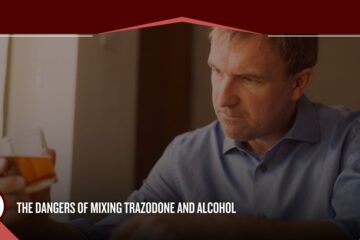The opioid crisis in Texas is a pressing issue that demands our attention. This crisis, a grim reality for many Texans, has far-reaching consequences that affect communities, families, and individual lives. It’s a complex problem rooted in a myriad of factors, from prescription practices to illicit drug trafficking. But, despite its complexity, there are strategies for prevention and treatment that can help turn the tide. Alamo Behavioral Health TX talks about the opioid crisis, exploring its causes, the demographics it affects, and the strategies we can employ to combat it. We’ll dive into prevention strategies, from public awareness campaigns to healthcare provider training, and discuss treatment approaches, such as medication-assisted treatment and behavioral therapies. Also, we’ll examine the importance of community engagement and collaboration and the barriers we must overcome to implement these strategies effectively.
Understanding the opioid crisis in Texas is the first step toward a solution. Let’s take that step together.
Understanding the Opioid Crisis in Texas
In 2016, there were 1,375 opioid-related deaths in Texas. During that calendar year, 4.9 Texans per 100,000 persons died of an opioid overdose. Throughout the entire nation, 13.1 persons per 100,000 died from the same cause in the same year. While the opioid overdose death rate in the state is lower than the national rate, as per official death statistics, this number is nothing to scoff at.
This is especially alarming given that the numbers increased. Since 2017, about 52% of unintentional overdose death were due to opioid abuse. Then, the statistics from 2020 show that opioid use in Texas was at 7.2 percent. In comparison, national usage was lower at 5.6 percent.
Understanding the opioid crisis in Texas requires a comprehensive look at:
- The types of opioids prevalent in the state
- The contributing factors of the opioid crisis in Texas
- The demographics of the affected individuals and regions
This understanding is crucial in formulating effective strategies for prevention and treatment.
Types of Opioids Prevalent in Texas
This crisis is a multifaceted issue, with various types of opioids contributing to its prevalence. Prescription opioids, such as oxycodone and hydrocodone, are often prescribed for pain relief but can lead to addiction if misused. Heroin, an illegal opioid, also plays a significant role, as does fentanyl, a synthetic opioid that is up to 50 times more potent than heroin. These opioids have infiltrated many corners of the state, leaving no community untouched.
Contributing Factors to the Opioid Crisis in Texas
Contributing factors to this crisis are numerous. Over-prescription of opioids by healthcare providers has led to an abundance of these drugs, making them readily available for misuse. Additionally, illicit drug trafficking, particularly fentanyl and heroin, has exacerbated the problem. These substances often enter Texas via the southern border, making their way into communities across the state.
The Demographics Affected by the Opioid Crisis in Texas
The demographics of those affected by the opioid crisis in Texas are diverse. It’s a problem that transcends age, race, and socioeconomic status. However, certain regions and populations bear a heavier burden. For instance, urban areas like San Antonio have seen a surge in opioid-related issues, leading to an increased demand for services like drug rehab in San Antonio.
Rural areas are also significantly impacted. Limited access to healthcare and treatment resources in these regions often compounds the problem. For those struggling with addiction, finding reliable residential treatment facilities in Texas can be a lifeline. These centers provide comprehensive care, including detoxification, therapy, and aftercare planning, to help individuals overcome their addictions and reclaim their lives.

Prevention Strategies for Opioid Addiction
Prevention strategies are something that we have to talk about when mentioning the opioid crisis in Texas. They include:
- Education and raising awareness
- Prescription monitoring programs
Education and Awareness
One of the first steps in this direction is public awareness and education. Implementing targeted education campaigns on opioid risks can help individuals understand the dangers associated with these drugs.
Additionally, raising awareness about prescription guidelines and safe medication disposal can prevent the misuse of prescription opioids. For instance, many people are unaware that a local opioid detox center in San Antonio can provide guidance on safe disposal methods.
Prescription Monitoring Programs and Healthcare
Another essential prevention strategy is the use of Prescription Monitoring Programs (PMPs). These programs allow healthcare providers to track patients’ prescription histories, helping to identify potential opioid misuse and prevent doctor shopping. Enhanced use of PMPs can be a significant deterrent to opioid abuse.
Healthcare provider training is also a key prevention strategy. By educating healthcare professionals about pain management alternatives, we can reduce the reliance on opioids for pain relief. Encouraging responsible opioid prescribing practices can also help to limit the availability of these drugs, thereby reducing the chances of misuse.
Moreover, access to naloxone, a medication that can reverse an opioid overdose, is vital. Expanding naloxone availability to first responders and community members can save lives. Providing training on naloxone administration and overdose response is equally important. For example, staff at a heroin detox in San Antonio center must be trained to administer naloxone, providing an additional layer of safety for individuals in treatment.
Prevention strategies such as public awareness, PMPs, healthcare provider training, and access to naloxone are key to tackling the opioid crisis in Texas. By implementing these strategies, we can help to reduce the prevalence of opioid misuse and its devastating consequences.

Treatment Strategies for the Opioid Crisis in Texas
Treatment strategies are a critical component in addressing the opioid crisis in Texas. One such strategy is Medication-Assisted Treatment (MAT). By expanding access to MAT programs for opioid use disorder, we can provide individuals with a combination of medications like methadone, buprenorphine, or naltrexone and counseling. This comprehensive approach can significantly improve recovery outcomes.
Behavioral Therapy, Recovery Support, and Integrated Care
Behavioral therapies play a crucial role in treatment strategies. Evidence-based behavioral therapies for substance use disorder can help individuals change their attitudes and behaviors related to drug use. Additionally, addressing underlying mental health issues and trauma can provide a more holistic approach to treatment. For instance, a fentanyl detox in San Antonio might offer trauma-informed care as part of their treatment program.
Recovery support services are another essential part of treatment strategies. Establishing recovery centers and peer support programs can provide individuals with a supportive community, which is often key to maintaining recovery. Offering counseling, employment assistance, and housing support can also help individuals rebuild their lives after overcoming addiction.
Integrated care is a vital treatment strategy. Integrating substance use disorder treatment with primary healthcare, we ensure that individuals receive comprehensive care. This care addresses not only their addiction but also any co-occurring medical and psychiatric conditions.
Community Engagement and Collaboration
Community engagement and collaboration are vital when it comes to the opioid crisis. One important aspect of this is the collaboration between law enforcement and treatment providers. Implementing diversion programs for non-violent drug offenders can help individuals get the help they need rather than simply punishing them. Encouraging treatment instead of imprisonment for individuals with substance use disorder is a more compassionate and effective approach. For instance, insurance coverage for addiction treatment can make these programs more accessible, allowing individuals to get the help they need without the fear of financial ruin.
Community-based partnerships also play an important part. We can provide a wealth of prevention and treatment resources by collaborating with community organizations. Local nonprofits, faith-based organizations, and even businesses can all contribute to this effort. These partnerships can also help foster supportive environments for recovery. A community that understands and supports recovery can make a significant difference in the lives of individuals struggling with addiction.
Another important aspect of community engagement is ensuring that individuals have access to the resources they need. This includes not only treatment programs but also insurance coverage that can make these programs accessible. For example, Humana rehab coverage can help individuals afford the treatment they need, removing one of the significant barriers to recovery.

Leaders need to help out!
It’s very important to engage local leaders in the fight against the opioid crisis. Elected officials, school administrators, and other community leaders can use their influence to promote awareness and understanding of the crisis. They can also advocate for policies that support prevention and treatment efforts, such as increased funding for local treatment programs or regulations that encourage responsible opioid prescribing practices.
Schools and institutions play a big role
Moreover, schools and educational institutions can play a significant role in prevention efforts. Schools can equip students with the knowledge they need to make informed decisions about drug use by incorporating drug education into their curriculums, They can also provide support for students who may be struggling with substance use or have family members who are.
Those in need are a community as well
Individuals in recovery themselves can be powerful advocates in the community. Their firsthand experiences can provide valuable insights into the realities of addiction and recovery. By sharing their stories, they can help to reduce the stigma associated with substance use disorders and inspire others who are struggling with addiction to seek help.
Overcoming Barriers to Implementation of Opioid Addiction Prevention and Mitigation Strategies
Overcoming barriers to implementation is a critical step toward the topic of the opioid crisis in Texas. Some of the most prevalent barriers are:
- Resource allocation
- Stigma
Resource Allocation
One of the most significant barriers is funding and resource allocation. Advocacy for increased funding for prevention and treatment programs is essential. More funding can lead to more comprehensive services, from public education campaigns to medication-assisted treatment programs.
However, simply having more resources is not enough. We also need to ensure that these resources are allocated efficiently to maximize their impact. For instance, insurance providers like Cigna can play a role by expanding their Cigna rehab coverage, making treatment more accessible to those in need.
Stigma and How to Disperse It
Another major barrier is the stigma associated with addiction. This stigma can prevent those in need from seeking help and can make recovery more challenging for those who do. Launching anti-stigma campaigns can help to reduce negative perceptions of addiction. These campaigns can educate the public about the realities of addiction, dispelling myths and misconceptions. They can also promote empathy and understanding for those affected by the opioid crisis, fostering a more supportive environment for recovery.
In addition to these efforts, insurance providers can also play a role in reducing stigma. For example, by offering comprehensive UMR rehab coverage, this insurance provider can send a message that addiction is a legitimate medical condition that deserves treatment, not judgment.

The Role of Alamo Behavioral Center in Addressing the Opioid Crisis in Texas
The opioid crisis in Texas and the rest of the country is a complex issue that requires a multifaceted approach. We’ve explored the various aspects of this crisis, from understanding its roots to implementing prevention strategies, treatment options, and community engagement efforts.
However, it’s important to remember that while the crisis is daunting, there are resources available to help. Alamo’s friendly and knowledgeable team is committed to providing comprehensive care for individuals struggling with opioid addiction. We offer a range of services, including detox treatment options and ongoing support to help patients on their path to recovery.
We understand that each patient is unique and requires a personalized approach to treatment. Our dedicated team of professionals works tirelessly to ensure that every patient receives the care they need in a supportive and understanding environment.
We can make a difference. Together, we can work toward a future where addiction no longer holds our communities hostage and those in need can live their lives free from the grip of opioids.




